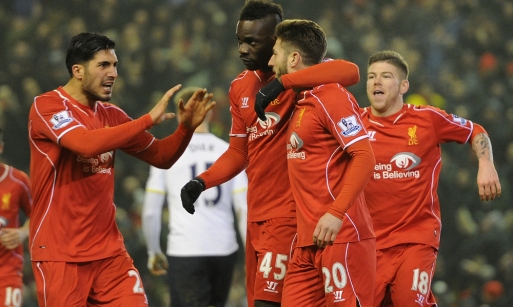Making sense of Liverpool’s ‘transfer committee’ used to be an arduous task two years ago primarily due to lack of information on the subject, but doing so today makes you want to tear your hair apart because any information available leaves more questions unanswered than it answers.
This is my attempt at understanding the various stages of the player recruitment process within this complex yet fascinating system.
- Rodgers and his team identify positions that need to be strengthened and the players that would facilitate it;
- The performance and data team analyses these players on a wide range of parameters; this is supplemented by “old-school scouting” carried out by Rodgers and his team of scouts.
- They’re left with a short list of players representing “an educated view” arrived at by combining the above processes.
- Rodgers submits his preference to the other five members of the committee, who vote on the same.
- In case of a simple majority, the committee proceeds to acquire the player. However, if the requisite votes are not met, Rodgers must settle for a player as agreed upon by the members.
I must state that there is no definitive source that corroborates this entirely. It is however, based on a number of articles and interviews by reliable persons such as Ian Ayre and James Pearce.
James Pearce recently revealed some truths about the relationship between the transfer committee and Rodgers. He said that although the committee members have the right to veto Rodgers’ preferred player, Rodgers does not have the power to turn down their choice of player. He cites Balotelli as the most recent example of this flaw in the system, saying Brendan never wanted to sign the striker but was forced to settle for him.
Pearce also says that Rodgers wanted to bring in Michel Vorm as a backup to Mignolet in order to constantly keep the Belgian on his toes, but this was vetoed by the members.
Former FSG employee Mike Bernard echoes this sentiment. According to him, Rodgers wanted players like Eriksen, Bony, Ashley Williams and even Diego Costa, only to be overruled by the members.
Source: swanseacity.net
Rodgers’ treatment of Balotelli in particular makes it clear that something is wrong. When it comes to addressing the Italian, there’s generally some element of hypocrisy on Rodgers’ part.
For instance, on 18th October, Rodgers said to the Liverpool Echo, “He (Balotelli) is doing his best and has worked like a lion [in training]. Nobody is more determined than him to show his value and worth.” Just four days later, after the drubbing at the hands of Real Madrid at Anfield, Rodgers cast doubt on whether Balotelli will be a long term success, “He is trying his best but whether his best is good enough long term, we will see.” Again on January 24th, Rodgers stressed the importance of aggressive pressing as one of the key aspects of his philosophy, “If you can’t do that [press], then you’re not going to be a part of what this team is trying to achieve,” which is fair enough – except he proceeded to start 35 year old Steven Gerrard in three successive games within a period of six days.
So James Pearce’s revelation merely confirmed what every Liverpool supporter had already suspected.
The transfer committee was hyped up to be a major upgrade on the previous regime comprising Damien Commoli as Director of Football (DoF). The rationale behind the shift around player acquisitions, according to Ian Ayre, was to make the transfer process ‘more scientific’. “Your biggest expenditure line can’t be the whim of any individual,” he said. “What we need is more people involved in the process.”
Yet it would seem that this committee of six, which essentially distributes the powers and functions of the Director of Football among its members, has limited the role of its most knowledgeable, and only football man – the manager.
Sterling and Henderson, among others, are testament to Rodgers’ ability to bring the best out of the youngsters at his disposal. In Brendan’s first season in charge, Henderson was nearly traded off for Fulham’s Clint Dempsey. Fast forward two years and you find him next in line to replace Steven Gerrard as Liverpool captain; Sterling has grown so much in the same period that you’d struggle to name many footballers on the planet in the same age bracket that are better than him; more recently, the decision to bring back Jordon Ibe from his loan spell at Derby County could prove to be a managerial masterstroke by Rodgers and the making of yet another Anfield sensation.
So when you’re fully aware of Rodgers’ capabilities in terms of player development (as I’m sure John Henry and Tom Werner are), it seems rather strange that as owners of the club, they’d even consider placing a cap on his say in the transfer process.
There are numerous threads on various forums that talk about the pros and cons of a structure comprising a Director of Football and another involving the Committee. And yet, the one similarity between the two that is seldom mentioned is a near equal possibility of a potential internal conflict unless both the manager and the other entity, as the case may be, trust each other unconditionally (which is evidently not true in Liverpool’s case).
Two years ago, in an interview with Sports Illustrated Magazine’s Grant Wahl, Liverpool CEO Ian Ayre said, “I think the [post of] Director of Football in a lot of cases creates as many problems as it solves because people always try to judge where the power base is with that role and who’s signing the players,” which is ironic considering the most polarizing topic for debate today among Liverpool supporters is whether a given player is “a committee signing or a Rodgers signing”.
So is the Transfer Committee a significantly better option than the Director of Football?
I wouldn’t say so. Despite not having reached Commoli levels of overspending, they’re still responsible for the plethora of targets they had to forego simply because while they were too busy trying to lowball the selling club, other interested parties swooped in and signed them.
However, to their credit, the club finally seems to have replaced Suarez’s goals with the likes of Emre Can, Markovic and Alberto Moreno representing a significant value addition to last season’s squad. Sakho too looks to have settled in after about two and a half years since his move from PSG.
To conclude, the entire process could be more effective if Rodgers was afforded a greater say in it by, for example, making him the superordinate member of the committee and consequently holding him accountable for any and every transfer related mishap. At this rate, however, with the dearth of accountability at the upper echelons of the club combined with the owners’ faith in the current system, there’s a good chance that Rodgers will bear the brunt of the blame for decisions that weren’t entirely his.
Arjun
Latest posts by Arjun (see all)
- Is Liverpool’s ‘Transfer Committee’ any good? - February 14, 2015

